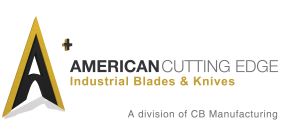It’s no secret that used tires are a huge solid waste problem. They exist in high volumes, are highly durable, and their composition is not environmentally friendly. Tires are often not welcome at landfills for several reasons. Among those is their tendency to trap methane gas, which causes them to bubble to the surface of the landfill. During the bubbling process, tires can damage the landfill lining that protects the environment from landfill pollutants.
In addition to being a major environmental threat, discarded tires are a health hazard. Considered a breeding ground for mosquitoes and other disease-carrying animals because of their hollow design and ability to hold stagnant water, they hold water for extended periods of time.
 As a fire hazard, they can burn at incredibly hot temperatures due to the oil used to manufacture them and they belch ugly black smoke and toxins into the air. These factors in addition to the “eyesore” issue are among those that make stockpiles of tires problematic.
As a fire hazard, they can burn at incredibly hot temperatures due to the oil used to manufacture them and they belch ugly black smoke and toxins into the air. These factors in addition to the “eyesore” issue are among those that make stockpiles of tires problematic.
While recycling tires used to be an expensive and difficult task, millions of tires every year are now recycled. Significant advances in technology in recent years have allowed tires to be profitably recycled into many different useful products. For example, shredded tires are now being used as landfill construction material for back-fill in gas venting systems, leachate collection systems, and operational liners.
Smooth Roads Ahead
With the reduction of scrap tires shrinking from over a billion in 1991 to 60 million in 2017, tire recycling is considered a major success story. Four out of five scrap tires today are re-purposed into another product after their life cycle. One of the chief current uses for scrap tires is tire-derived fuel, which is reported to burn cleaner than coal and most other fossil fuels.
With over 200 million scrap tires generated annually in the United States alone, it’s safe to say that tire recycling isn’t going away any time soon. If anything, there will continue to be an increase in the buzz surrounding tire recycling. And, while tire-derived fuel is big today, its use is decreasing. With a decline in the production and use of tire-derived fuel, the U.S. Tire Manufacturers Association has put out an appeal for an increase in the development of new sustainable end-use markets for scrap tires.
Driving the Future with Crumb Rubber
Tire-derived fuel (TDF) has seen major competition from clean burning natural gas, which has been adopted by the utility boiler market sector. Paper mills, which were a former major market for TDF have been steadily closing, which has had a negative effective on production. While there's been an increase in the cement kiln sector, it hasn't been enough to off-set the declines in two of the three major markets served by TDF.
As TDF steadily curbs as an end market for scrap tire recycling, crumb rubber and asphalt will become more important. The U.S. Tire Manufacturers Association is working with Department of Transportation offices in different states to expand the application of rubber-modified asphalt use. This is creating tremendous potential for a crumb rubber end markets that could help soften the decline in tire-derived fuel.
Major markets for crumb rubbers include:
- Athletic surfaces and fields

- Agrimats and equestrian footing
- Automotive parts and tires
- Construction/indoor
- Landscape, trails and walkways
- Molded and extruded products
- Playground and other safety surfaces
- Rubber modified asphalt and sealants
- Rubber and plastic blends
With the number of motor vehicles in the US growing to 271 million by 2021, the amount of recycled rubber products will grow as production ramps up. As this growth happens, there will be a need for more rubber recycling, which should drive more tire and rubber recycling machinery needs. Due to environmental concerns, state and national governments will have a growing interest in rubber recycling because of its benefits.
Where do Industrial Knives Fit In?
There is no question about the expense involved in the acquisition of tire shredding equipment. Tire recyclers have to think long and hard about which type of equipment will best suit the needs of their operation. How many tires are being processed on average? Does the operation require a primary and a secondary shredder? Is the profitability there if the decision is made to take the tires down to crumb?
With the future of rubber recycling moving away from tire-derived fuels and into expanded markets for crumb products, the answer may be that the added effort and expense is worth it. With that, there may be a need for heavier investment in capital equipment to process tires to a finer end product.
Whether you answer, “yes,” to that question or not, it pays to be savvy when it comes to the expenses of your operation. Save where you can without sacrificing quality and performance to improve profitability.
Aftermarket replacement tire recycling knives are one area where you can save over the OEM while maintaining or in some cases even improving yield. For example, industrial knives such as ACE brand tire recycling knives offer the same high-quality performance as the OEM brand because they’re manufactured to the OEM specification. Depending on your needs, an industrial knife expert like American Cutting Edge can manufacture replacement knives in different materials to wear longer, endure tougher conditions, and outperform the OEM.
Experts in failure analysis, knife manufacturers can engage their engineers to provide complimentary consultation to help determine where your recycling operation needs improvement. Often times, their adjustments can help reduce maintenance costs, knife change outs, wear and tear, increase yield, and improve the overall profitability of your operation.
Put the ACE Experts to Work for You
American Cutting Edge manufacturers tire recycling knives and wear parts for CM and Eldan machinery. Put the experts at ACE to work for you, today! With over 50 years of industrial knife manufacturing experience, we have a unique understanding of cutting and recycling applications. Our customers rely on our deep engineering and metallurgy to troubleshoot their toughest challenges and help them achieve operational and budgetary efficiencies.




